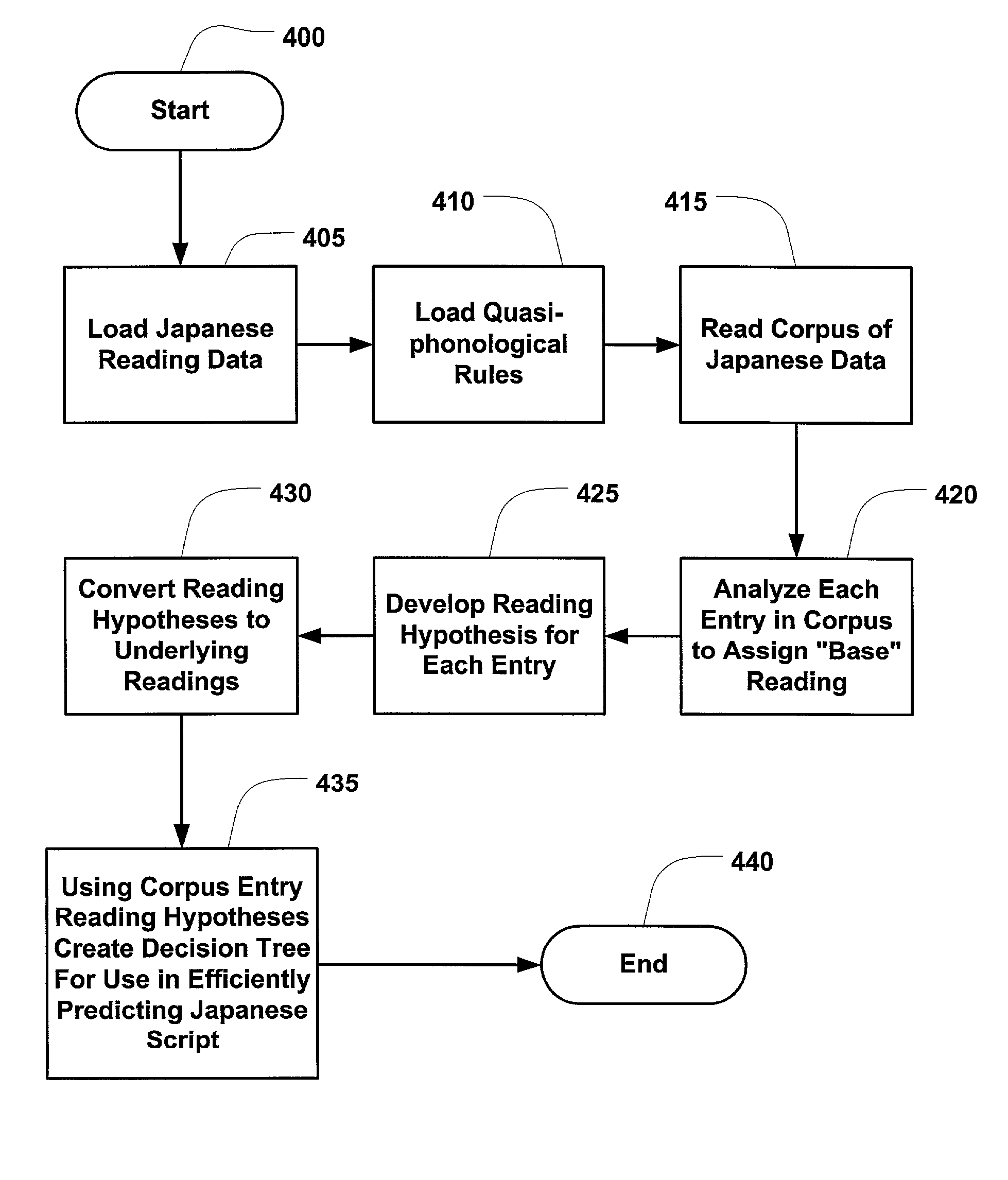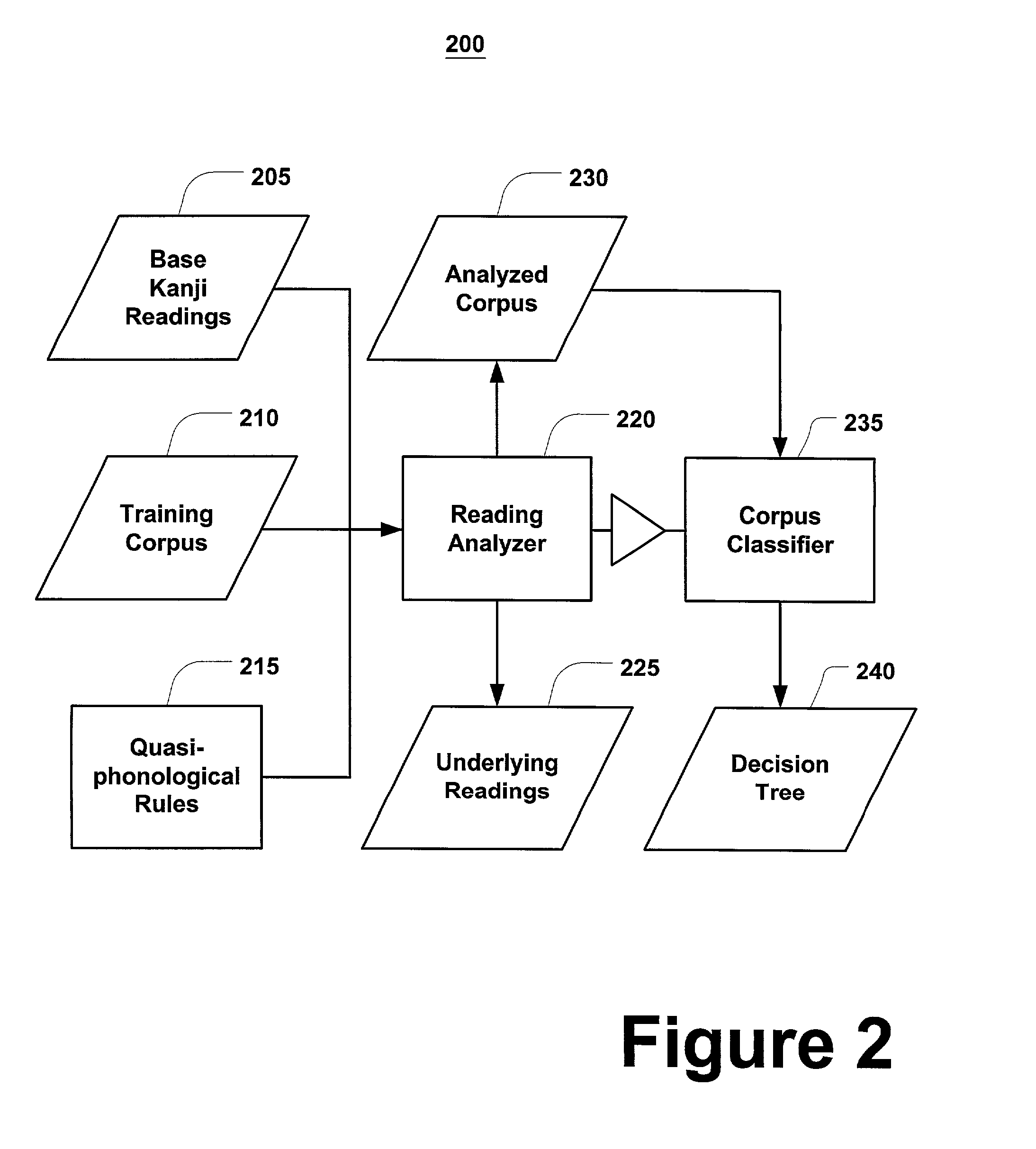Method for predicting the readings of japanese ideographs
a technology of ideographs and readings, applied in the field of predicting readings of foreign languages, can solve the problems of variation in the amount of words represented in kanji, the inability of writers to choose between different kanji, and the unusualness of other mixtures of scripts within the same word to be considered errors,
- Summary
- Abstract
- Description
- Claims
- Application Information
AI Technical Summary
Problems solved by technology
Method used
Image
Examples
Embodiment Construction
[0022] Overview
[0023] The Japanese language is spoken by the approximately 120 million inhabitants of Japan, and by the Japanese living in Hawaii and on the North and South American mainlands. It is also spoken as a second language by the Chinese and the Korean people who lived under Japanese occupation earlier this century.
[0024] Generally, three categories of words exist in Japanese. The native Japanese words constitute the largest category, followed by words originally borrowed from China in earlier history, and the smallest but a rapidly growing category of words borrowed in modern times from Western languages such as English. This third category also contains a small number of words that have come from other Asian languages. The frequency of these three types of words varies according to the kinds of written material examined. For example, in magazines, native Japanese words constitute more than half of the total words, while the Chinese borrowed words average about 40%, and th...
PUM
 Login to View More
Login to View More Abstract
Description
Claims
Application Information
 Login to View More
Login to View More - R&D
- Intellectual Property
- Life Sciences
- Materials
- Tech Scout
- Unparalleled Data Quality
- Higher Quality Content
- 60% Fewer Hallucinations
Browse by: Latest US Patents, China's latest patents, Technical Efficacy Thesaurus, Application Domain, Technology Topic, Popular Technical Reports.
© 2025 PatSnap. All rights reserved.Legal|Privacy policy|Modern Slavery Act Transparency Statement|Sitemap|About US| Contact US: help@patsnap.com



